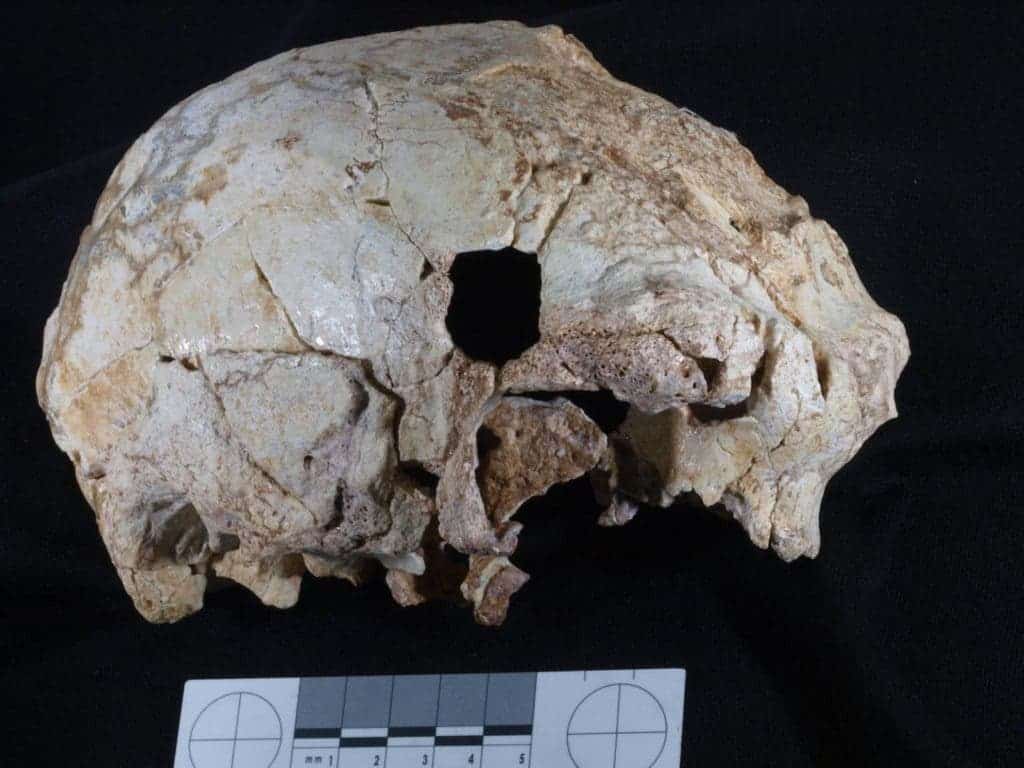About half a million years ago, our ancestors from the genus Homo began to expand their reach out of Africa and into Europe and Asia through the Middle East. Some of these hominids would ultimately evolve into Neanderthals, which lived from 200,000 up to 40,000 years ago, but it was never clear who was their direct ancestor. A fantastic anthropological find might help settle this long-standing debate. Buried deep in rock-solid sediments, researchers uncovered a 400,000-year-old skull which bears strikingly similar features to a Neanderthal skull. The dating suggests, however, without the shadow of a doubt that this couldn’t be a Neanderthal.
Another mysterious hominid?
The partial skull was found in the Gruta da Aroeira cave, in Portugal in 2014 on the very last day of a field study led by Rolf Quam, an associate professor of biological anthropology at Binghamton University in New York. The site has been excavated ever since 1998 proving to be a great hub for middle Pleistocene fossils and artifacts. Along the years, researchers found in the Aroeira cave human teeth, animal remains and even stone-made hand axes. These stone-crafted tools were likely developed in the Middle East half a million years ago and these excavations prove that the technology spread to as far as Portugal within 100,000 years.
The prize find, however, is this peculiar skull which belonged to an unidentified species of Homo.
The skull was found buried in the back of the cave in petrified sediment and recovering it proved to be a challenge. Imagine having to retrieve a delicate artifact that’s surrounded by concrete. Power tools and saws were used to cut a huge block which was later transferred to a research facility in Madrid, Spain. It took two and a half years to extract the skull in viable conditions, the researchers stated in their paper published in the Proceedings of the National Academy of Sciences.
Although only half of the skull was recovered, the other half was mirrored using CT scans of the cranium. This way, the researchers learned the skull, nicknamed the Aroeira cranium, has a cranial capacity of 1,100 cubic centimeters whereas you or I have an average capacity of 1,300 cubic centimeters. The skull also features the famous Neanderthal-shaped brow and a smaller bony projection behind the ear. Two fragmentary teeth exhibit a mixture of traits, including some that are similar to those attributed to Neanderthals, and others to Homo erectus.
“Unlike most other Middle Pleistocene finds, which are of uncertain chronology, the Aroeira 3 cranium is firmly dated to around 400 ka and was in direct association with abundant faunal remains and stone tools. In addition, the presence of burnt bones suggests a controlled use of fire. The Aroeira cranium represents a substantial contribution to the debate on the origin of the Neandertals and the pattern of human evolution in the Middle Pleistocene of Europe,” the researchers concluded.
Whoever the skull used to belong to, this person must have looked more like a Neanderthal than a Homo Sapiens but was neither. Anthropologists are still debating the nature of this skull but some believe this is just another piece of evidence that Homo species exhibited great variation and regional combinations of traits across the Old World.
Another hypothesis, which is purely speculative at this point, is that the skull belongs to a new species of Homo. That’s not a very preposterous thing to suggest considering the mysterious Denisovans, likely a new species of human discovered in 2008, or the yet unexplained for Dmanisi hominins, the earliest human fossils found on the border of Asia and Europe. Then, there’s the case of two partial skulls both around 120,000 years old recovered from China which look like they belonged to an Asian Neanderthal — the species is also unidentified in this case.
Today, we humans are the only species alive from our genus but we do know for sure that we shared this planet at the same time with Neanderthals and Denisovans. Perhaps, there were far more.











